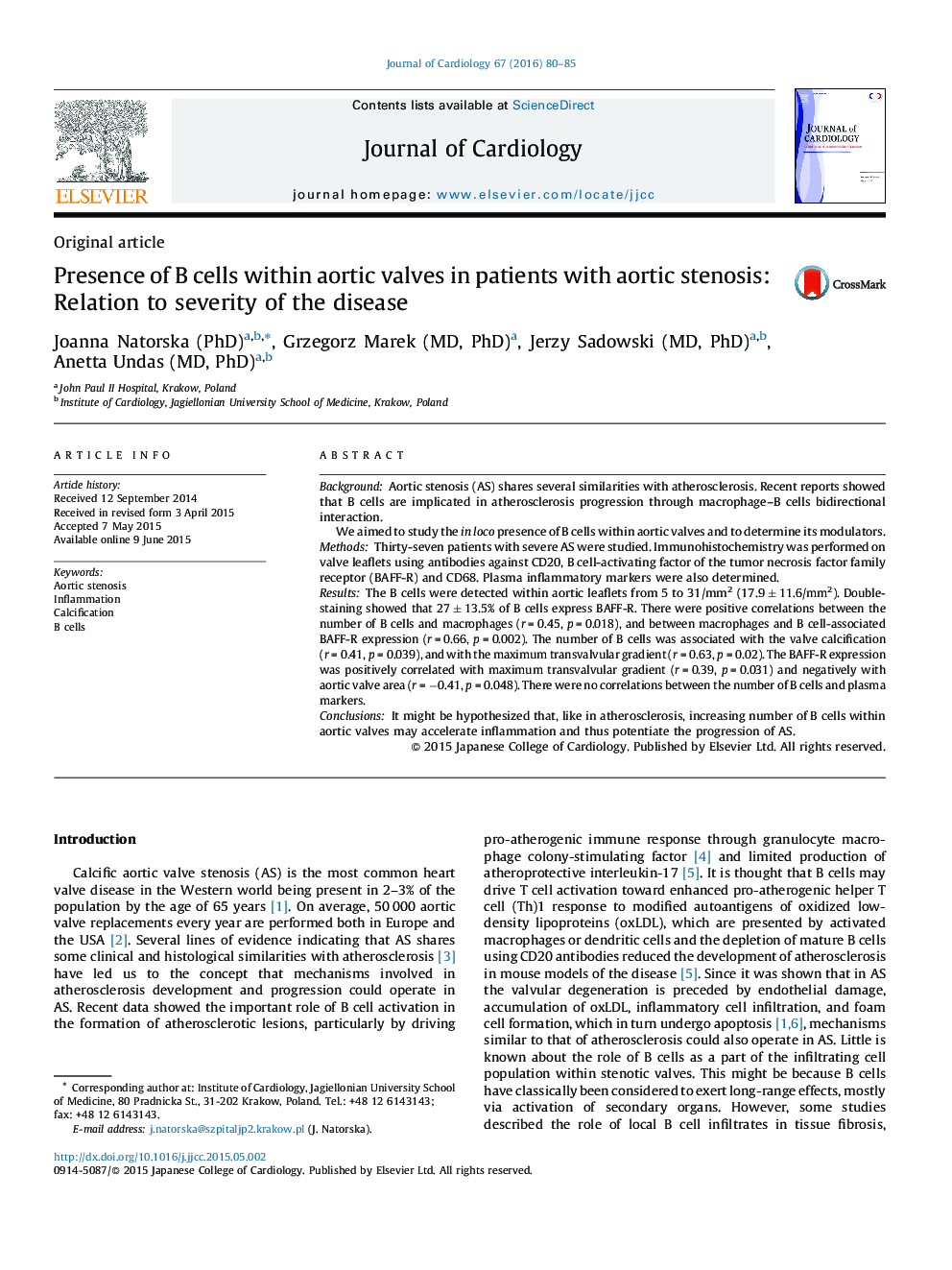| Article ID | Journal | Published Year | Pages | File Type |
|---|---|---|---|---|
| 2962907 | Journal of Cardiology | 2016 | 6 Pages |
BackgroundAortic stenosis (AS) shares several similarities with atherosclerosis. Recent reports showed that B cells are implicated in atherosclerosis progression through macrophage–B cells bidirectional interaction.We aimed to study the in loco presence of B cells within aortic valves and to determine its modulators.MethodsThirty-seven patients with severe AS were studied. Immunohistochemistry was performed on valve leaflets using antibodies against CD20, B cell-activating factor of the tumor necrosis factor family receptor (BAFF-R) and CD68. Plasma inflammatory markers were also determined.ResultsThe B cells were detected within aortic leaflets from 5 to 31/mm2 (17.9 ± 11.6/mm2). Double-staining showed that 27 ± 13.5% of B cells express BAFF-R. There were positive correlations between the number of B cells and macrophages (r = 0.45, p = 0.018), and between macrophages and B cell-associated BAFF-R expression (r = 0.66, p = 0.002). The number of B cells was associated with the valve calcification (r = 0.41, p = 0.039), and with the maximum transvalvular gradient (r = 0.63, p = 0.02). The BAFF-R expression was positively correlated with maximum transvalvular gradient (r = 0.39, p = 0.031) and negatively with aortic valve area (r = −0.41, p = 0.048). There were no correlations between the number of B cells and plasma markers.ConclusionsIt might be hypothesized that, like in atherosclerosis, increasing number of B cells within aortic valves may accelerate inflammation and thus potentiate the progression of AS.
